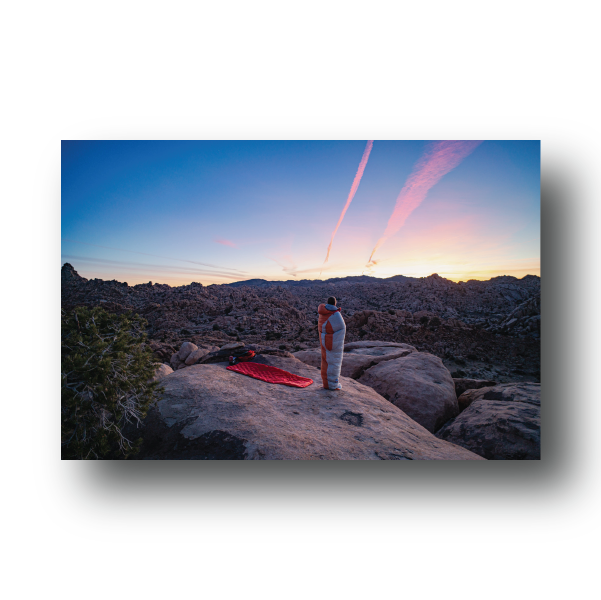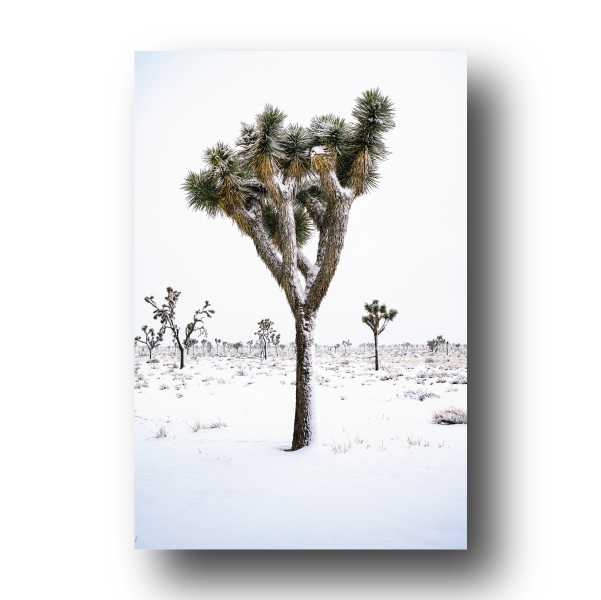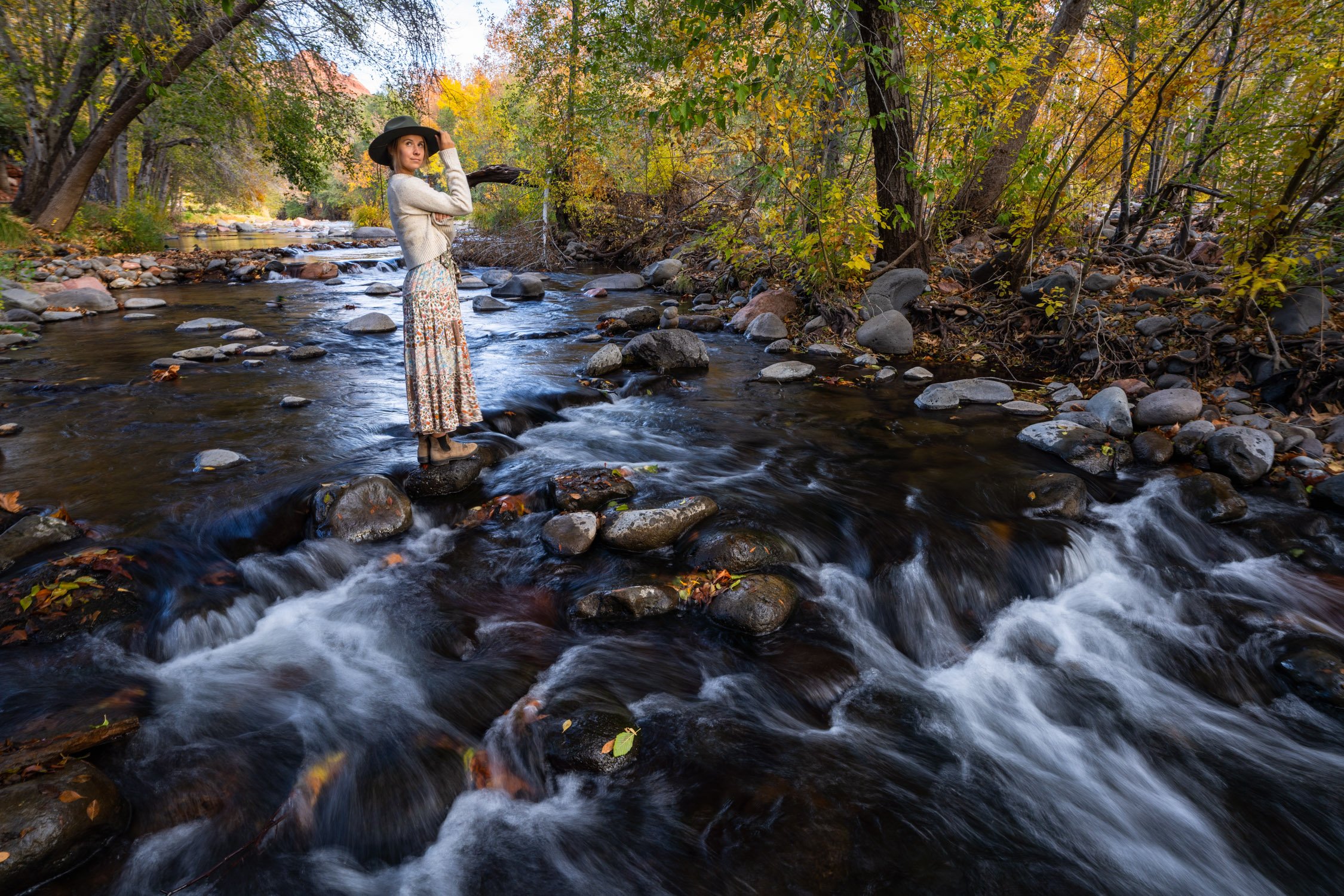Joshua Tree's Bouldering Scene: Tips for First Time JTree Boulderers
When it comes to bouldering, few places can match the allure of Joshua Tree National Park in California. Nestled in the Mojave Desert, this unique climbing destination offers a breathtaking landscape of rugged rock formations, wide-open spaces, and an abundance of boulder problems waiting to be solved. Whether you're a seasoned climber or just starting, Joshua Tree has something to offer everyone.
In this blog post, we'll explore the bouldering scene at Joshua Tree and provide valuable tips to help you make the most of your climbing adventure.
Climbing LHMBP in Joshua Tree at sunset. Photo by Dalton Johnson
Pros
Stunning Scenery: The park's otherworldly desert landscape, with its iconic Joshua Trees and rugged rock formations, provides a breathtaking backdrop for climbing.
Varied Difficulty Levels: Joshua Tree offers bouldering problems suitable for climbers of all skill levels, from beginners to experts, making it an inclusive climbing destination.
Unique Rock Features: The park's granite rock formations offer a diverse range of holds, cracks, and features, providing opportunities for both technical and powerful climbing.
Highball Bouldering: Joshua Tree is renowned for its highball bouldering problems, offering thrilling and challenging experiences for those seeking more adventure.
Diverse Bouldering Areas: The park boasts multiple bouldering areas, each with its own character and style, providing climbers with a wide variety of routes to explore.
Climbing Community: Joshua Tree has a vibrant climbing community, and you'll likely meet like-minded climbers who share their knowledge and passion for the sport.
Accessibility: Many bouldering areas are easily accessible from parking lots or campgrounds, making it convenient to spend your days climbing.
Camping Options: The park offers both developed campgrounds and backcountry camping, allowing climbers to immerse themselves in the experience.
Cons
Weather Extremes: Joshua Tree's climate can be harsh, with scorching summers and chilly winters. Bouldering is best during the fall and early spring, and summers can be uncomfortably hot.
Crowds: Popular bouldering areas, especially the classics, can get crowded during peak seasons. This can lead to wait times on routes and a less serene experience.
Limited Amenities: While there are campgrounds and some amenities in the park, you won't find the same level of services and facilities as in more developed climbing destinations.
Park Regulations: Climbers must adhere to strict park regulations, including obtaining climbing permits, respecting Leave No Trace principles, and following specific climbing guidelines.
Sparse Water Sources: Water sources in the park are limited, so climbers need to plan for hydration and consider carrying their own water.
High Elevation: Some climbing areas in Joshua Tree are at higher elevations, which can affect those not acclimated to altitude. Take precautions to avoid altitude-related issues.
Distance from Services: The park is relatively remote, and the nearest town with services is not right next door. Be prepared with food, supplies, and other essentials.
Wildlife Concerns: Joshua Tree is a protected environment with unique wildlife. Climbers must be mindful of not disturbing the flora and fauna, including nesting birds.
The Joshua Tree Experience
Before we dive into the tips, let's take a moment to appreciate what makes Joshua Tree so special. This national park is renowned for its otherworldly landscape, with a vast expanse of granite rock formations, unique flora, and a tranquil desert atmosphere. The bouldering opportunities here are unparalleled, attracting climbers from all over the world.
Choosing the Right Season: Joshua Tree's climate can be quite extreme, with scorching summers and chilly winters. The best time for bouldering is during the fall and early spring when the weather is mild. Summer temperatures often exceed 100°F (38°C), making climbing uncomfortable and dangerous. Be sure to plan your visit accordingly.
Park Regulations and Permits: Joshua Tree National Park is committed to preserving its natural beauty, and climbers must adhere to park regulations. You'll need a climbing pass, which can be obtained at the park's visitor centers. Respect these regulations, such as Leave No Trace principles, to ensure future generations can enjoy this unique environment.
Safety First: Bouldering may seem less risky than rope climbing, but safety should always be a top priority. Make sure to bring crash pads and spotters for protection in case of falls. Familiarize yourself with the terrain and potential hazards like loose rock. It's also wise to let someone know your climbing plans and expected return time.
Essential Gear for Bouldering in Joshua Tree
Now that you're prepared mentally, let's talk about the gear you'll need for bouldering in Joshua Tree:
Climbing Shoes: Invest in a good pair of climbing shoes that provide both comfort and precision. The granite rock in Joshua Tree can be abrasive, so shoes with durable rubber are recommended.
Crash Pads: These are crucial for cushioning your falls. Multiple crash pads can be stacked to create a larger landing zone, offering better protection.
Chalk and Chalk Bag: Keep your hands dry for a secure grip by using climbing chalk. A chalk bag attached to your harness is convenient for easy access.
Brushes: A brush will help you clean holds of sand, dirt, and debris, ensuring a better grip.
Guidebook or App: Invest in a guidebook or use a climbing app like Mountain Project or Rockfax to navigate the vast array of bouldering problems in Joshua Tree.
First Aid Kit: Always have a basic first aid kit on hand for minor injuries and scrapes.
Hydration and Nutrition: Bring plenty of water and energy-rich snacks to stay hydrated and fueled during your climbing sessions.
Exploring the Bouldering Routes
Now that you're equipped with the necessary gear and knowledge of park guidelines, it's time to explore the bouldering routes Joshua Tree has to offer:
Varied Difficulty Levels: Joshua Tree is renowned for its diverse range of bouldering problems suitable for climbers of all levels. Whether you're a beginner or a seasoned pro, you'll find routes to challenge and delight you.
Hidden Gems: While classics like "Gunsmoke" and "White Rastafarian" are iconic, don't hesitate to explore lesser-known areas. Sometimes, the hidden gems offer a quieter and more intimate climbing experience.
Classic Problems: For the quintessential Joshua Tree experience, try your hand at classic problems like "Stem Gem," "The Chube," or "Robby's Roof."
Highballing: Joshua Tree is famous for its highball bouldering, which involves climbing tall, daring problems without ropes. If you're up for the challenge, make sure you have the appropriate gear and experience.
Respect Wildlife: Remember that Joshua Tree is a protected environment with unique wildlife. Be respectful of the flora and fauna, and don't disturb or damage them while climbing.
Here's a list of must-try boulder problems in Joshua Tree National Park, ranging from V0 (beginner) to V10 (advanced):
V0-V2: Beginner to Intermediate
Crown Jewel (V0): A classic V0 problem located in the Hidden Valley Campground area, offering an excellent introduction to Joshua Tree bouldering.
Gunsmoke (V0): Another iconic V0 problem in the Hidden Valley Campground, known for its unique moves and beautiful setting.
Feudal Roof (V1): A fun and challenging V1 problem in the Real Hidden Valley area with interesting holds and movement.
Double Dip (V2): Located in the Barker Dam area, Double Dip offers a mix of slab and crack climbing, making it a great intermediate problem.
V3-V5: Intermediate to Advanced
White Rastafarian (V3): Found in the Real Hidden Valley area, this V3 problem is known for its tricky crux and picturesque surroundings.
Illusion Dweller (V4): A V4 classic in the Real Hidden Valley with beautiful features and thoughtful sequences.
Stem Gem (V4): A technical V4 problem with stemming moves, found in the Hall of Horrors area.
Hidden Gold (V5): Located in the Real Hidden Valley, Hidden Gold offers a challenging line with excellent movement.
V6-V8: Advanced to Expert
Robby's Roof (V6): This V6 problem in the Real Hidden Valley is famous for its powerful roof moves.
King Conqueror (V7): A steep and dynamic V7 problem in the Gunsmoke area, offering powerful crux moves.
JBMFP (V8): Short for "John Bachar Memorial Face Problem," this V8 boulder problem in the Gunsmoke area is both technical and strenuous.
V9-V10: Expert
Brown Sugar (V9): Located in the Real Hidden Valley, Brown Sugar is a tough V9 problem known for its balance-intensive moves.
The Chube (V9): This challenging V9 problem in the Hall of Horrors area features small holds and technical sequences.
A Maze of Death (V10): An advanced V10 problem in the Real Hidden Valley with intricate beta and demanding holds.
Climbing Etiquette and Leave No Trace Principles
Joshua Tree National Park has a strong ethos of preserving its natural beauty and ensuring a positive climbing experience for all. Here are some essential etiquette tips and Leave No Trace principles to follow:
Stay on Designated Trails: Avoid trampling on delicate desert vegetation by staying on established paths and approaches.
Pack Out Your Trash: Dispose of all trash, including chalk, tape, and tape backing, in designated receptacles or pack it out with you.
Minimize Chalk Use: Use chalk sparingly to prevent unsightly white streaks on the rock.
Respect Wildlife: Keep a safe distance from wildlife and avoid disturbing nesting birds or other animals.
Noise and Music: Keep noise levels down and be considerate of other climbers. Not everyone appreciates the same music, so use headphones when necessary.
Campfire Regulations: Campfires are generally prohibited in the park. Check with park rangers for current regulations on fires and stoves.
Group Size: Keep your group size manageable and considerate of others. Crowded boulders can make for an unpleasant climbing experience.
Camping and Accommodations
Joshua Tree National Park offers various camping options, from developed campgrounds to backcountry camping. Here are some tips for camping:
Reservations: Campgrounds in Joshua Tree can fill up quickly, especially during the peak climbing season. Make reservations in advance if possible, and check the park's website for availability and current conditions.
Backcountry Camping: If you prefer a more secluded experience, consider backcountry camping. Obtain a permit and follow park guidelines for camping in undesignated areas.
Amenities: Some campgrounds have amenities like water and restrooms, while others are more primitive. Plan accordingly and bring essential supplies.
Leave No Trace: Practice Leave No Trace principles when camping by packing out all trash and waste.
Community and Local Resources
Joshua Tree has a tight-knit climbing community, and tapping into local resources can enhance your climbing experience:
Guide Services: Consider hiring a local climbing guide to help you navigate the park's bouldering routes and terrain safely.
Climbing Partners: If you're traveling solo or looking for climbing partners, check out online forums and bulletin boards where climbers often seek partners.
Local Shops: Visit local climbing shops and gear rental outlets for last-minute gear needs or to connect with the climbing community.
Respect Access Fund: Support organizations like the Access Fund, which work to protect and maintain climbing areas like Joshua Tree.
Punting off Iron Resolution in Joshua Tree. Photo by Dalton Johnson
Joshua Tree National Park offers a bouldering experience like no other. Its unique landscape, diversity of routes, and challenging problems make it a must-visit destination for climbers of all skill levels. By following safety precautions, respecting park regulations, and practicing Leave No Trace principles, you can contribute to the preservation of this natural wonder while enjoying an unforgettable climbing adventure. So, grab your crash pads, chalk up your hands, and get ready to explore the fascinating world of Joshua Tree's bouldering scene. Happy climbing!











